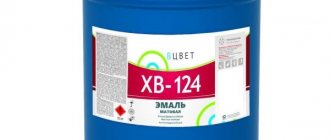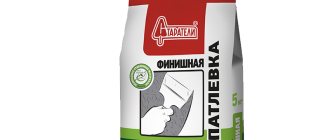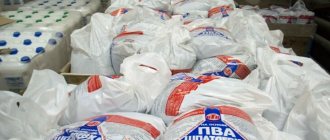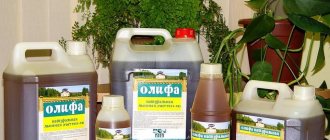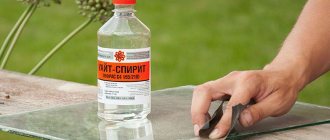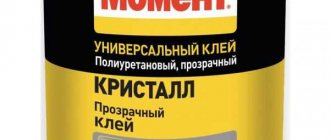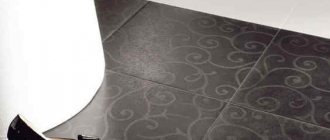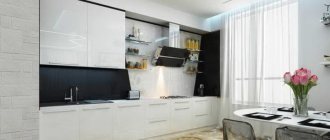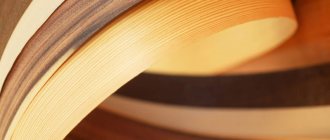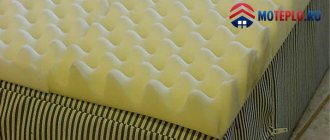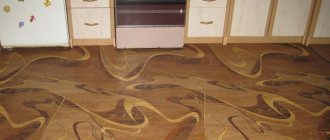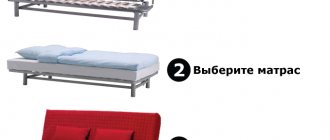Before you begin finishing the surfaces in the room, they should be leveled. For this, different technologies are usually used, but the most popular remains the one that involves the use of appropriate cement-based mixtures. Among others, the basic putty “Starateli” should be highlighted, which meets the relevant requirements for such building mixtures. Firstly, the composition is easy to apply. Secondly, it is quite easy to process. Thirdly, it can be used to form a moisture-resistant, durable coating.
Description
The basic putty “Starateli” is a dry mixture of white cement, which expands the scope of use and speeds up the time it takes to complete the work. If we compare with plasters based on gray Portland cement, the described composition has a light beige color, so finishing can begin immediately after the starting putty has dried.
If we consider the product in terms of composition, then “Prospectors” can be classified as dry plasters. However, one of the important differences here is the plasticity that is characteristic of putties. This indicates versatility. The mixture combines moisture resistance and leveling properties, which are characteristic of gypsum putties and plasters.
Using the “Starateli” basic putty, you can take advantage of another important advantage, which is the possibility of gluing wallpaper without additional puttying of the starting layer. This allows you to save money and time.
The described mixture contains purified sand, the fraction size of which is 0.4 mm. The recipe calls for the addition of gypsum and ground clinker. The mixture also contains additives that prevent shrinkage and improve elasticity, and also help repel moisture. The mixture contains polymer plasticizers and additives.
The starting putty is a modified mixture, because marble flour, fine sand and cellulose ethers are added to it, which helps retain moisture and allows the composition to be applied in a layer of up to one centimeter.
Putty “Prospectors” - what brand is it
The manufacturer of Starateli base putty is Russian and has been around for almost 30 years. During this period, it launched the production of various compositions for construction work. It remains invariably popular among buyers, selling products not only in our country, but also abroad.
Initially, he began producing ready-made mortars for construction, and later expanded the production line. The latest technologies and high-quality raw materials are used, which allows us to obtain highly effective products.
The manufacturer of Starateli base putty is Russian and has been around for almost 30 years.
Advantages and disadvantages
Basic putty can close small cracks on the base, level the layer, make the surface smooth, ready for further finishing with any materials. In this type, the main component is the cement component, which increases resistance to external factors and makes it possible to use it in damp rooms.
Among the advantages of the composition are the following:
- The base is white cement;
- High level of layer strength;
- Waterproof property;
- Resistance to cracking;
- Easy to apply;
- High degree of adhesion;
- Reasonable price.
There is a basic gypsum-type putty, it is suitable for working with gypsum plasterboard, it is used for rooms with normal humidity levels, and does not withstand exposure to moisture.
Basic putty can close small cracks on the base, level the layer, make the surface smooth, ready for further finishing with any materials.
Main properties and reviews about them
The basic putty “Starateli” is made on the basis of a time-tested recipe. Among the main properties of the product are:
- plastic;
- waterproof;
- high adhesion.
As for plasticity, the mixture can be spread in a continuous thin layer, which is the main advantage. Application can be carried out using putty tools such as a spatula or grater. On large surfaces, the composition is leveled without slipping or scuffing.
Reading reviews about the basic putty “Prospectors”, you can understand that it is quite often compared with gypsum putties, which have less impressive adhesion to an unprimed surface. Consumers also like water resistance. When dry, the layer does not form pores. It is easy to sand until the grooves and bumps disappear.
The material can be used both outside and indoors. It does not crack if applied in a thick layer. The mixture does not shrink. In this regard, according to consumers, it can be used to level walls with large differences and flaws.
How long does it take for the base layer to dry?
The manufacturer indicates the need to dry the layer for 24 hours before applying the next layer. Don't rush, otherwise the putty may fall off the surface ahead of time, and you'll have to putty again.
The manufacturer indicates the need to dry the layer for 24 hours before applying the next layer.
Technical characteristics and consumption
The characteristics of the basic putty “Prospectors” are truly outstanding. This is what makes the mixture so popular among consumers. The operating temperature range is quite wide and varies from +5 ˚С to +30 ˚С. The basic putty “Starateli”, the technical characteristics of which are described in the article, begins to set 1.5 hours after preparation.
In order to obtain the optimal consistency, you need to mix a kilogram of the mixture with 0.3 liters of water. The applied layer should have a thickness of up to 10 mm in one pass. You may also be interested in the adhesion force to the base, which is 0.25 MPa. The consumption of the basic putty “Starateli” per 1 m2 is 1 kg. This figure is correct if the thickness of the applied layer is 1 mm.
Putties
BASIC GYPSUM PUTTER 20 KG
Add to Basket
GYPSUM LEVELING PUTTER 20 KG
Add to Basket
FINISHING GYPSUM PUTTER 12 KG
Add to Basket
FINISHING GYPSUM PUTTER 20 KG
Add to Basket
FINISHING GYPSUM PUTTER 25 KG
Add to Basket
FINISHING GYPSUM PUTTER 5 KG
Add to Basket
PUTTY READY SUPERFINISHING PASTE 15 KG
Add to Basket
PUTTY READY SUPERFINISHING PASTE 7 KG
Add to Basket
POLYMER PUTTY POLYART 20 KG
Add to Basket
POLYMER FINISHING PUTTY KR 20 KG
Add to Basket
POLYMER FINISHING PUTTY KR 5 KG
Add to Basket
POLYMER FINISHING PUTTY PLUS MOISTURE-RESISTANT 20 KG
Add to Basket
BASIC CEMENT PUTTER 20 KG
Add to Basket
CEMENT BASIC PUTTY 5 KG
Add to Basket
BASIC GRAY CEMENT PUTTER 20 KG
Add to Basket
CEMENT FACADE PUTTER 20 KG
Add to Basket
CEMENT FACADE PUTTY 5 KG
Add to Basket
GRAY CEMENT FACADE PUTTER 20 KG
Add to Basket
CEMENT FRONT-FINISHING PUTTER 20 KG
Add to Basket
Construction materials Prospectors
Construction materials “Prospectors”
Categories
- Plasters
- Putties
- Self-leveling floors
- Tile adhesives
- Primers
- Paints
- Waterproofing
- Grouts and impregnations
- Decorative plasters
- Assembly adhesives
- Universal mixtures
- Plasters
- Putties
- Self-leveling floors
- Tile adhesives
- Primers
- Paints
- Waterproofing
- Grouts and impregnations
- Decorative plasters
- Assembly adhesives
- Universal mixtures
Tips for use: surface preparation
When working with any type of plaster mixture, you can achieve good results if you properly prepare the surface. There should be no crumbling areas on the walls. If the coating peels off, it is removed. Painted walls are cleaned with graters, scrapers and rags. The layer must first be softened with a hair dryer.
Brick or concrete walls are cleaned of splashes, influxes of mortar, lime and cement laitance. The base should be cleaned of dust. Compressor units are usually not used for this; wide brushes are better suited. Cracks should be cleared to remove crumbling material and filled with putty.
At the final stage of preparation, it is necessary to apply a primer. It is selected depending on the porosity of the base. For foam concrete, for example, deep penetration soil is suitable. For ordinary concrete, acrylic-based film-forming compounds should be purchased.
Safety precautions
The composition is not toxic, but the master must protect the skin and eyes from contact with the dry mixture. Therefore, wear protective clothing, rubber gloves, and it is also advisable to use safety glasses.
The composition is not toxic, but the master must protect the skin and eyes from contact with the dry mixture.
Prospector putty base is distinguished by its high quality, which makes it easy to obtain a smooth surface. The type of putty mixture is selected based on operating conditions; the humidity level in the room is important. So the manufacturer has cement and gypsum types, which differ in resistance and types of materials on which they can be applied.
How to mix and apply the solution
To mix the solution, it is recommended to collect a plastic container with a smooth inner surface. Water is poured there, and then the dry mixture is poured out. This sequence must be followed, otherwise you will have to deal with lumps. A small amount of the mixture must be stirred by hand. But you can cope with a large volume only with the help of a mixer.
The amount of solution is calculated based on the amount of work you plan to complete in an hour and a half. The putty is mixed twice. After pouring the mixture, mix it with a mixer until the dry lumps are wet. The solution is then left for 5 minutes, then the procedure is repeated. These simple manipulations allow the mixture to ripen.
How to prepare the base for basic putty
The preparatory stage largely determines the quality of all work done. For this reason, you should perform the steps carefully so as not to end up with a short-lived coating with flaws.
It is necessary to remove all unnecessary elements. All contaminants are cleaned, poorly adhering parts are removed, and these areas are degreased, if any. If there is, then you need to completely remove the old layers that have already lost their functions.
After drying, a primer solution must be applied; it is recommended to choose an option of the same brand, then the solutions will complement each other and the adhesion will be the best. You can proceed to applying putty only on a completely dried base.
After drying, a primer solution must be applied; it is recommended to choose an option of the same brand.
Application method
PVA-based putty is applied only to the plastered surface or over the base. This type of putty cannot be applied in a thick layer, so it is not suitable for leveling and sealing cracks. The surface for finishing should be carefully prepared.
- If there are greasy or oily stains on the surface, they are removed using organic solvents. Significant gaps and cracks can be sealed with sealant using a construction gun. The base must be cleaned of dust. As a primer, you can use diluted PVA glue with water in a ratio of 1 to 4.
- To apply the putty, you need a wide spatula that allows you to cover a significant area of the wall. In this case, the tool should be used clean, since dried grains leave grooves on the surface. PVA-based compositions usually do not separate, but it is recommended to stir them before application. This can be done using a construction mixer and a special drill attachment.
- The floor must be covered. The PVA solution absorbs well, and it will be difficult to remove stains from the floor. For protection, you can spread plastic wrap and secure it with masking tape. Despite the frost resistance of the putty itself, it is recommended to apply it in a warm room at a temperature of 20-30 degrees Celsius.
- The putty should be applied in a thin layer of 0.5 mm. There can be up to 4 layers in total. It is dangerous to make it too thick: the material cracks when it dries and can break off in pieces. When the layer dries, you need to sand it with a polyurethane float to obtain an ideal surface. Many reviews from builders say that you don’t have to wait for complete drying, this will make sanding much easier.
- After complete drying, you can apply a decorative layer. If this is painting, you can additionally apply a primer made from diluted PVA. For wallpapering, a primer is not needed; its function will be performed by wallpaper glue.
Kinds
Putty materials are divided into types according to several criteria.
Based on their composition, the following types of putty are distinguished:
- cement – the main components are cement and sand, and reinforcing fibers, gypsum, and marble powder are used as additives;
- acrylic – based on acrylic polymer;
- acrylate – contains acrylic and latex;
- oil – the multicomponent composition includes drying oil, glue, acrylates, chalk;
- silicate – has a base of silicate liquid glass;
- silicone – the main component is silicone.
The most common composition is cement, as it has an affordable price and adequate quality. Cement-based putty is applied to all types of mineral surfaces: concrete, plaster, lime, plaster and brick.
This composition has the following positive qualities:
- frost resistance – withstands more than 100 freezing cycles, can be used at low temperatures from -60 degrees;
- strength and wear resistance;
- fire resistance, refers to non-combustible materials;
- water resistance – resistant to precipitation;
- environmental safety - contains natural mineral additives;
- good hiding power - capable of covering base defects up to 1.5 cm.
Acrylic compounds are waterproof and do not crack. They create a durable elastic layer that can be further processed. Acrylic-based putties are only suitable for finishing with a layer of up to 50 mm; they are not capable of filling deep unevenness due to their fine structure. When grinding, you need respiratory protection, as the composition is very dusty.
Adding latex to acrylate putty gives increased moisture-resistant properties, ductility and durability. It is easy to apply and does not require pre-mixing with water. But the price for such a product is much higher than for cement compositions.
Oil putty is used to level wooden façade elements. It has its own characteristics in application, which limits its use. The oil putty layer must be protected with oil paint, since the components do not tolerate high humidity. Putty is applied in a thin layer of up to 2 mm and repeated several times, which gives strength.
Silicate compounds fit well on aerated concrete, foam concrete, and shell rock. Strict adherence to application technology creates a protective, vapor-permeable layer. Used as a decorative finish.
When using silicone-based putty, a strong, vapor-permeable protection is formed. The silicone layer repels dirt. There is the possibility of tinting in different colors, and the composition will be the final decorative layer on the facade. A limitation in application is the high cost of the material.
According to their intended purpose, façade putty is divided into the following types:
- Basic. The granular structure is intended for leveling and restoration of facades with cracks and potholes up to 150 mm.
- Finish. The liquid fine structure is used for finishing with a layer of up to 0.4 cm.
- Decorative. With its help, various textured effects are created. Texture putty is used for the facade.
- Wood compositions. For wooden structures, vapor permeability is important so that the outer layer of putty does not block the release of water vapor.
Depending on the readiness of the putty, two types of products are distinguished: dry mixture and ready-made composition. Dry putty has the form of a powder, which requires preliminary mixing with water to a certain consistency. After mixing, the components of the mixture react, maturation occurs, after which you can begin to putty. Available in bags from 5 to 30 kg.
The finished putty is a fully prepared product suitable for direct use on the surface. All you need to do is stir the mixture until smooth. They produce ready-made polymer compositions that are bottled in buckets of 2.5 kg.
Norm per square meter
Consumption of basic putty
It is intended for primary processing - sealing cracks or leveling. The required amount of this material is determined based on:
- Initial goals of starting treatment;
- Condition of the walls. The more unevenness, the more mixture will be required.
Approximate consumption of putty per 1 m2 of plaster when using starting putty in digital equivalent. For example, with a 10 mm layer, on average, about 10 kg of material will be needed. Simply put, for each individual square meter, an average of about a kilogram of putty is used. Some builders, in order to save money, add sand to the solution.
Consumption of finishing putty
It must be purchased in different quantities. The determining factors when calculating its size are:
- Surface quality. The more perfect it needs to be, the more putty is needed;
- The properties of the material, its quality and structure, which are largely determined by the manufacturer. Different mixtures differ in their characteristics, and a solution produced under one brand sometimes requires less than the same one, but “with a different name.”
On average, for a layer 1 mm thick you need from 0.9 to 1.2 kg. There is also a separate type of “powder” - universal. It can be used in both primary and secondary processing and is usually sold in 20 kg bags. The consumption of a “station wagon” is less - on average, one bag is enough to treat a surface with an area of 40 to 50 m2.
Gypsum plaster
It has been repeatedly noted that today gypsum putty is in the popularity rating. It is she who can boast of excellent quality indicators and ease of application.
To treat 1 m2 of surface, you need to stock up on 0.4-0.5 kg of gypsum material. All calculations must be carried out taking into account the presented standards.
